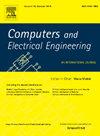Wireless embedded wearable haptic assistance navigation device based on networked technology for the visually impaired
IF 4
3区 计算机科学
Q1 COMPUTER SCIENCE, HARDWARE & ARCHITECTURE
引用次数: 0
Abstract
This paper presents HAND (Haptic Assistance Navigation Device), a wearable device designed to help people with visual impairments navigate their surroundings more safely and independently. Worn on the back of the hand, HAND uses a combination of an ultrasonic sensor and an infrared Time-of-Flight sensor to detect obstacles. When an obstacle is detected, HAND provides clear and precise tactile feedback through small vibrating motors, giving the user immediate information about their environment. The paper details the device's design, including its power system, how the sensors work together, and the vibration feedback system. The performance of the device is ensured through extensive testing procedures. Our tests showed that both sensors are highly accurate, detecting distances with very little error. We also confirmed that the vibration motors respond quickly and provide easily noticeable feedback. Demonstrations with users indicate that HAND successfully identifies obstacles and helps users understand their environment through touch. Looking ahead, HAND has the potential for further improvements, such as integrating a sensor to track spatial orientation and refining the vibration system. As a component of a larger electronic travel aid, HAND shows great promise in significantly assisting individuals with visual impairments.
基于网络技术的视障人士无线嵌入式可穿戴触觉辅助导航装置
本文介绍了一种可穿戴设备HAND (Haptic Assistance Navigation Device),旨在帮助视觉障碍人士更安全、更独立地在周围环境中导航。佩戴在手背上的hand,结合了超声波传感器和红外飞行时间传感器来探测障碍物。当检测到障碍物时,HAND通过小型振动电机提供清晰精确的触觉反馈,为用户提供有关其环境的即时信息。本文详细介绍了该装置的设计,包括其动力系统,传感器如何协同工作以及振动反馈系统。该设备的性能是通过广泛的测试程序来保证的。我们的测试表明,这两种传感器都非常精确,检测距离的误差很小。我们还证实,振动电机反应迅速,并提供容易注意到的反馈。与用户的演示表明,HAND成功地识别障碍,并帮助用户通过触摸了解他们的环境。展望未来,HAND有进一步改进的潜力,例如集成传感器来跟踪空间方向和改进振动系统。作为大型电子旅行辅助设备的一个组成部分,HAND在极大地帮助视力受损的个人方面显示出巨大的希望。
本文章由计算机程序翻译,如有差异,请以英文原文为准。
求助全文
约1分钟内获得全文
求助全文
来源期刊

Computers & Electrical Engineering
工程技术-工程:电子与电气
CiteScore
9.20
自引率
7.00%
发文量
661
审稿时长
47 days
期刊介绍:
The impact of computers has nowhere been more revolutionary than in electrical engineering. The design, analysis, and operation of electrical and electronic systems are now dominated by computers, a transformation that has been motivated by the natural ease of interface between computers and electrical systems, and the promise of spectacular improvements in speed and efficiency.
Published since 1973, Computers & Electrical Engineering provides rapid publication of topical research into the integration of computer technology and computational techniques with electrical and electronic systems. The journal publishes papers featuring novel implementations of computers and computational techniques in areas like signal and image processing, high-performance computing, parallel processing, and communications. Special attention will be paid to papers describing innovative architectures, algorithms, and software tools.
 求助内容:
求助内容: 应助结果提醒方式:
应助结果提醒方式:


